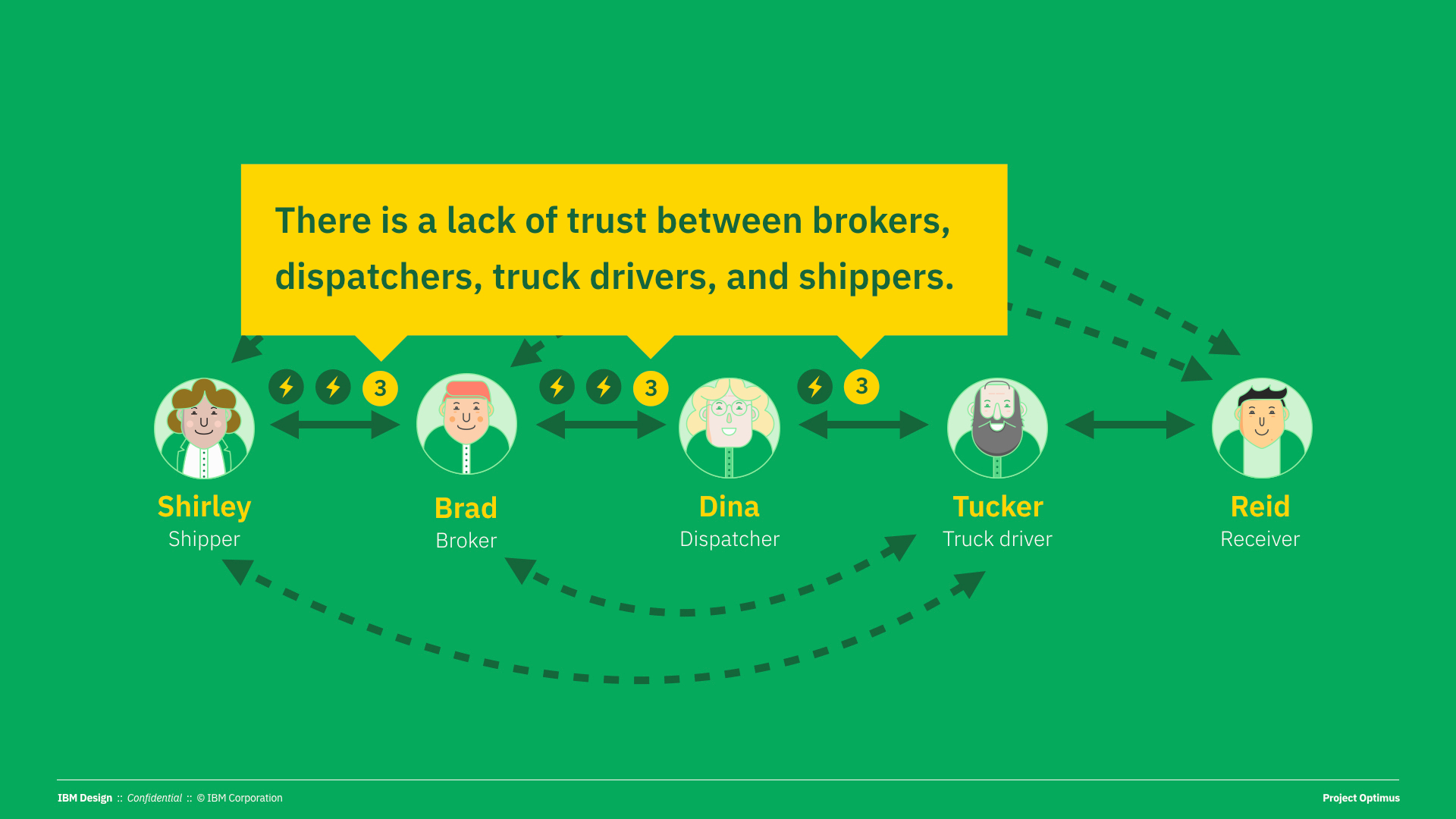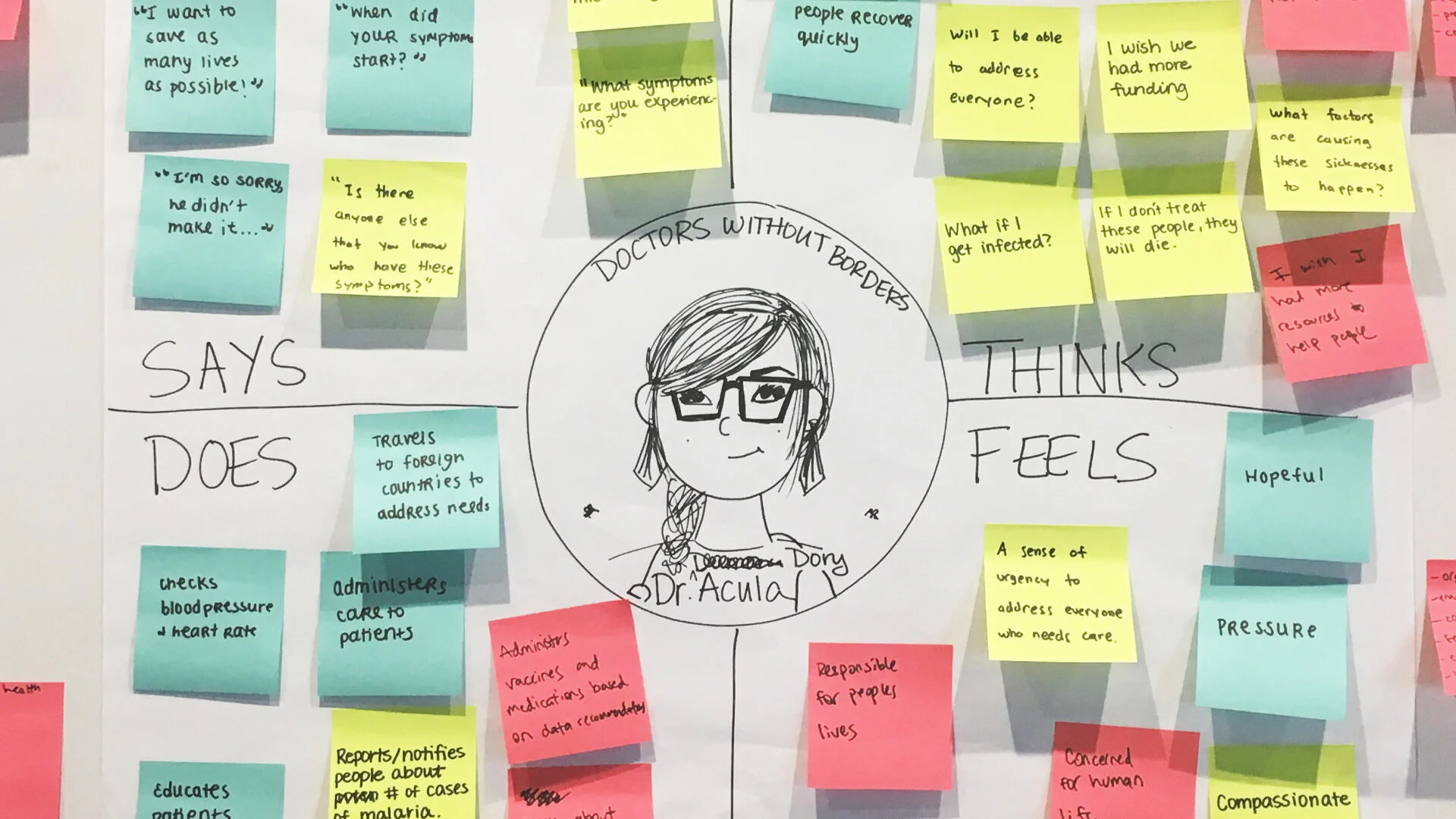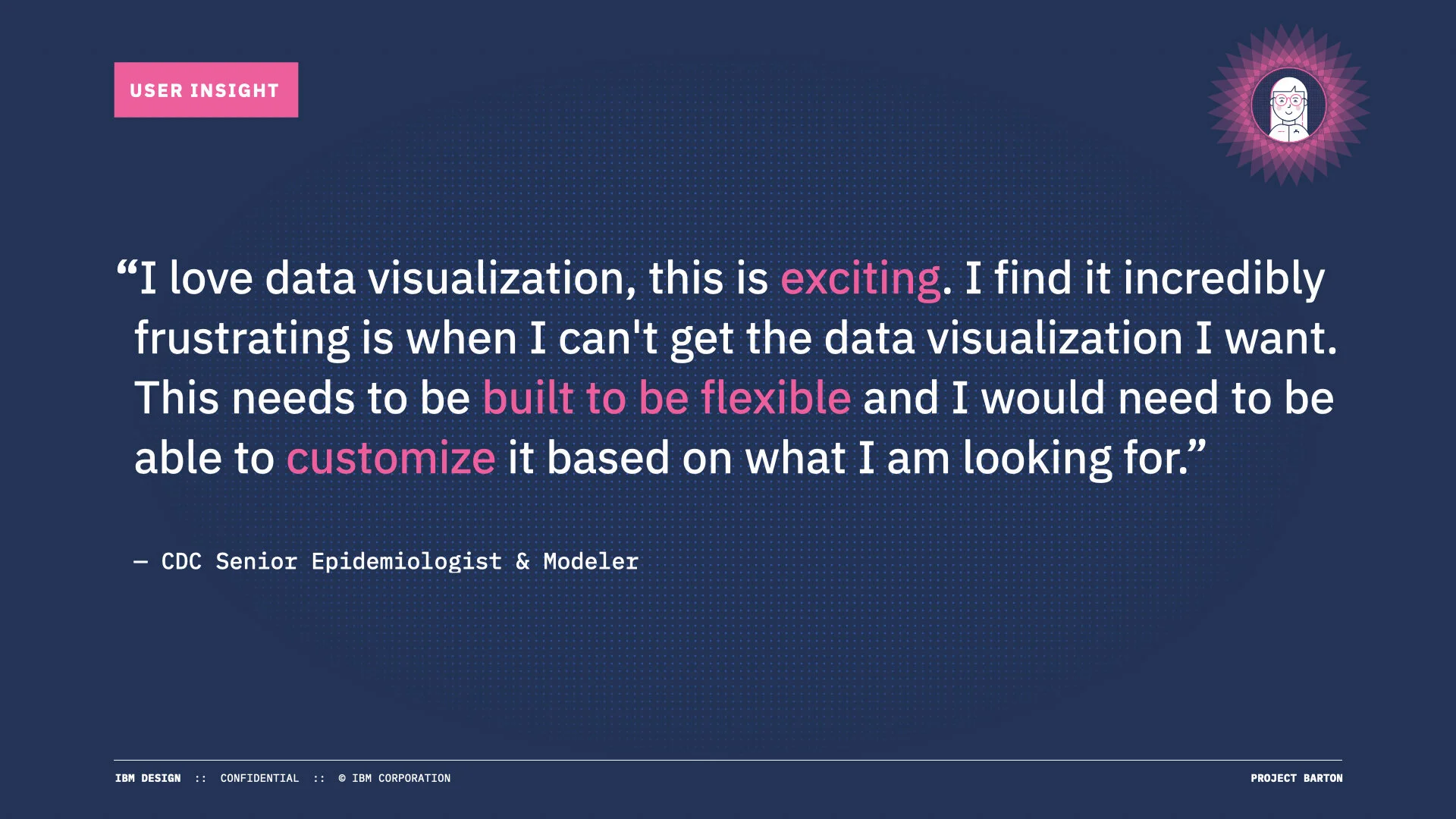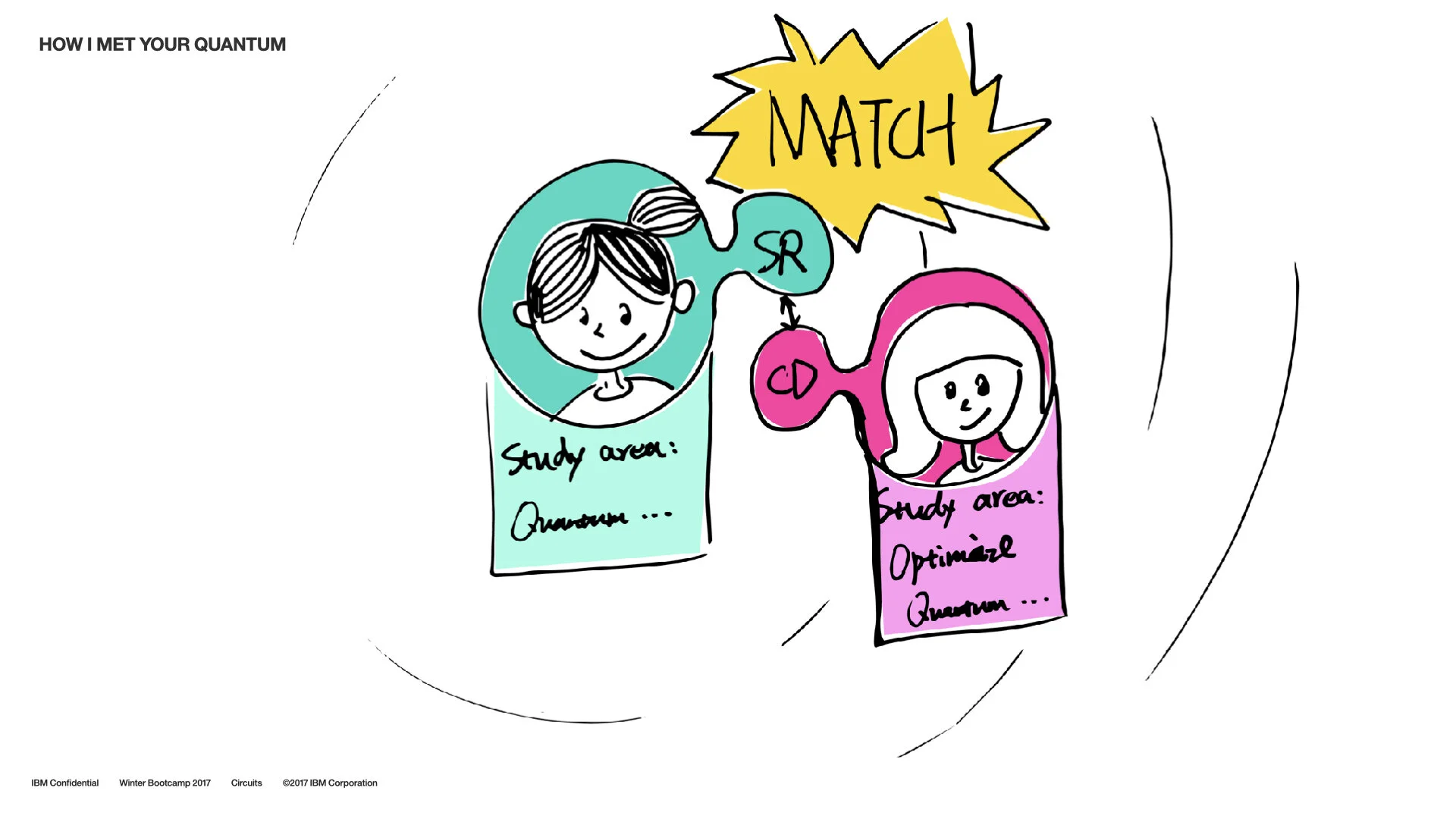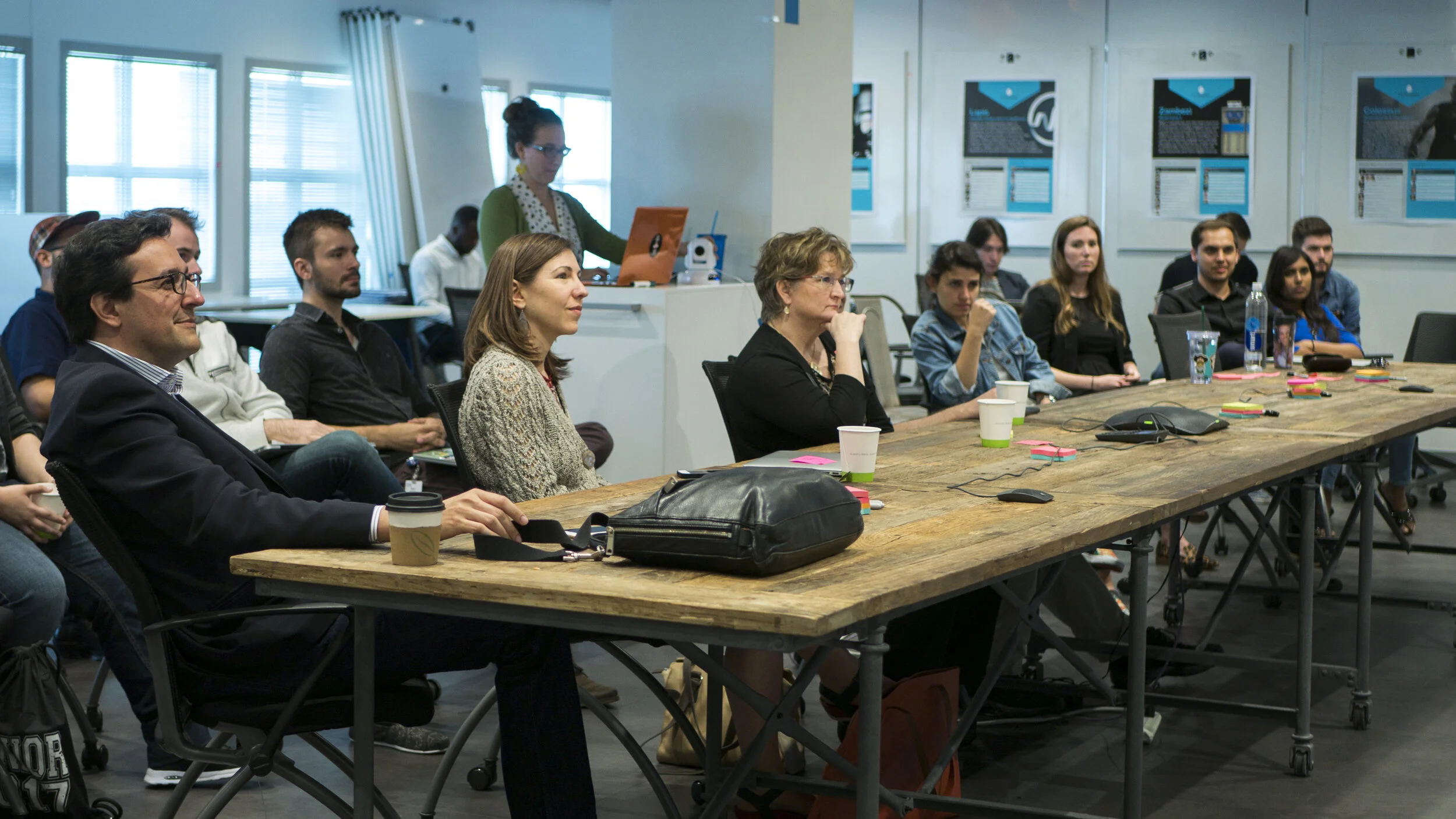I lead multidisciplinary design teams to envision new digital experiences
Design leadership
IBM Incubator Program
Cultivating early-career top talent and guiding them toward successful outcomes
The mission: Nurture disruption
The IBM Incubator is the essential capstone to a rigorous program for early professional designers and product managers new to IBM. Executives from across the company propose projects, and then teams of early professional designers and product managers execute them in several weeks, delivering a a prototype for solving a complex problem in the context of a user-centered story.
My role
During my time as a Design Lead in this role, I collaborated with co-leads to define strategy, structure and practices for the program. I worked with IBM executives interested in sponsoring a project to refine and strengthen their proposals, and selected only those with the highest potential for impact.
After projects were chosen, I guided teams toward successful outcomes using Enterprise Design Thinking. I mentored and navigated them through challenging situations, orchestrated logistical details, and helped clear corporate gorp so they could do their very best work.
Results
I selected, scoped, and led 12 incubator projects to successful completion from June 2016 – October 2017, and launched 77 individual early professionals into their IBM careers.
Let’s take a look at some example projects…
Transforming the trucking industry: Project “Optimus”
In this example IBM Incubator project, a small team of early professional designers and product managers envisioned a new experience for the logistics industry in four weeks. Read a more complete story "Transforming the Trucking Industry" on Medium.
Radical collaboration
Incubator team comprised of design researchers, UX designers, visual designers, and product managers working with their executive stakeholder learn about the complex logistics industry.
Primary user research
Incubator teams interview real people and synthesize the insights they learn to build empathy and understanding. In this project the team learned that mistrust among logistics industry workers is the root cause of many problems.
Bringing it all together
Prototype created for experience that demonstrates how trust is built through transparent logistics chain.
The team
Erica Raymond (co-lead), Patrick Ree, Abdullah Alomari, Claire McCloskey, Andreas Rau, Sammy Schuckert, Cody Cai and Nathalie Martin
Modeling infectious disease outbreak: Project “Barton”
Sponsored by IBM Watson Health division, this project sought to envision an experience that epidemiologists and public health officials could use to model the spread of infectious disease and the possible impacts of interventions. The team demonstrated extraordinary professional polish on this project, delivering a comprehensive picture of user desirability, business viability, technical feasibility, and the broader positive public health impacts of a product like Barton.
Developing empathy
An empathy map created by the team to help them formulate a holistic picture of people and their motivations, actions and feelings.
Envisioning the experience
Prototype created for epidemiologists to model an infectious disease outbreak and possible interventions such as school closures to share with decision makers.
Evaluating the solution
Incubator teams solicit feedback from real people in relevant roles about their work to incorporate feedback along the way. This quote from a Senior Epidemiologist at the CDC drove home the strength of their solution.
Me (center) with team Barton and project sponsor after their final playback.
The team
Hanna Oh (Associate Lead), Calvin Bench, Cody Cai, Schuyler Corbin, Jen Downs, Jenny Lanier, Claire McCloskey, and Ashley Profozich.
Humanizing quantum computing: Projects Qubit, Circuits, and Anyon
This series of three related projects provided IBM Quantum project sponsors with an empathetic view of various audiences’ needs for engaging with quantum computing content and prototypes for new design at a time when IBM was just beginning to make quantum systems and services more broadly accessible.
These projects collectively formed the foundation of user-centered design for quantum computing experiences and cultivated the talent of 22 early-professional designers, several of which moved on to become part of a permanent team for quantum computing design.
The learning curve for quantum computing is very steep, and the timelines for Incubator projects are tight, so I guided my teams as outlined in my Medium article “Six Empowerment Strategies to get Teams up to Speed in Complex Domains.”
Project Qubit
This project sought to inspire curiosity and convey a basic understanding of quantum computing for IBM business partners and potential clients visiting the TJ Watson lab.
Above: Storyboard frame for 180 degree video projection surface describing an IBM quantum computer.
Project Circuits
This project helped define the relationships between technical users and early adopters of quantum computing systems to uncover hidden user needs.
Above: Early concept sketch describing a quantum researcher matching service.
Project Anyon
This project culminated in a prototype for a digital experience that would inspire and motivate high school students to engage in self-directed learning about quantum computing.
Above: Screen from a digital experience that explains superposition, a quantum computing concept, in a fun interactive way.
Executive sponsors Dr. Dario Gil and Dr. Ari Font (IBM Research) receive a final presentation by a team of early-career designers. My role in this moment is to orchestrate logistical details so that my team can shine.
Incubator team “Anyon” presents a prototype for a digital experience designed to engage middle and high school students in quantum computing content.
The teams
Project Qubit: Sana Sharma, Pete Garvin, Caroline Gui, Matthew Johnson, Russell Huffman, Jose Paix, Andrew Nelson
Project Circuits: Danielle Naughton (co-lead), Harika Arumalla, Krystel Rahme, Semur Nabiev, Lynne Yao, Myriam Battelli, Zaid Edghaim, Dimitri Hoffmann, Sasha Williamson, Polly Adams, Amanda Cavanaugh, Eva Gage, Yeshe Wingerd
Project Anyon: Amanda Cavanaugh, Polly Adams, Dimitri Hoffmann, Zach Causey, Laura Walks
“Kara has a wealth of knowledge in all aspects of design. Her wisdom in design thinking, managing stakeholders, team dynamics, and leadership make her a beacon. Whenever our team was distressed she always had the right answer. Moreover, if she didn't have the answer she put us with an individual who did.”
— Incubator team member, 2017
“The collaborative work you have forged between IBM Research and IBM Design via the IBM Incubator program is phenomenal! I think you have done an outstanding job here, providing a platform for future projects as well as helping to bring forth the support of design with IBM Research.”
— Steve Kim, IBM Incubator Program Director, 2017


